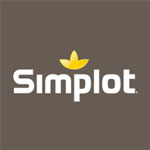The United States Food and Drug Administration (FDA) has completed its food and feed safety assessment of the J.R. Simplot Company’s second generation of Innate® potatoes. It concluded that the Russet Burbank Generation 2 tubers are not materially different in composition, safety and other relevant parameters from any other potato or potato-derived food or feed currently on the market. Simplot will still need to complete its registration with the Environmental Protection Agency (EPA) for these potatoes before introducing them for sale in the US marketplace.
Ranked as one of the world’s largest producers of frozen french fries, Boise, Idaho, USA-headquartered Simplot supplies major fast food chains and foodservice operators around the world. Field trials of the potato were conducted from 2009-11 in eight states – Idaho, Washington, North Dakota, Florida, Indiana, Michigan, Nebraska and Wisconsin.
The FDA’s safety consultation was voluntarily requested by Simplot and comes shortly after the US Department of Agriculture also deregulated the same potatoes. These federal clearances involved a thorough technical review and a public comment period that drew the support of leading potato research universities in the United States and Europe.
 Simplot says its second generation of Innate potatoes contain four benefits of relevance to growers, processors and consumers of spuds: less bruising and black spots; reduced asparagine; resistance to late blight pathogens; and enhanced cold storage capability. These benefits were achieved by adapting genes from wild and cultivated potatoes.
Simplot says its second generation of Innate potatoes contain four benefits of relevance to growers, processors and consumers of spuds: less bruising and black spots; reduced asparagine; resistance to late blight pathogens; and enhanced cold storage capability. These benefits were achieved by adapting genes from wild and cultivated potatoes.
Academics consulted by Simplot estimate that the Innate late blight resistance trait could result in a 25-45% reduction in fungicide applications annually to control late blight. Reduced asparagine means that accumulation levels of acrylamide can be cut by up to 90 percent when these potatoes are cooked at high temperatures. In addition, lowered reducing sugars enable cold storage at 38°F for more than six months without the build-up of sugars, which maintains quality, and which cannot be achieved until today.
 Comparison of a peeled Innate® Russet Burbank potato (foreground) to a conventional peeled Russet Burbank after 30 minutes shows that it stays whiter longer after the skin has been removed.Based on these academic estimates, if all Russet Burbank potatoes in the United States had Innate Gen. 2 traits, it is estimated that potato waste (in-field, during storage, packing, retail and foodservice for fresh potatoes) could be reduced by 986 million pounds. In addition, CO2 emissions could be cut by 146 million pounds, water usage reduced by 17 billion gallons, and a total of 495,000 fewer pesticide acre-applications would be needed.
Comparison of a peeled Innate® Russet Burbank potato (foreground) to a conventional peeled Russet Burbank after 30 minutes shows that it stays whiter longer after the skin has been removed.Based on these academic estimates, if all Russet Burbank potatoes in the United States had Innate Gen. 2 traits, it is estimated that potato waste (in-field, during storage, packing, retail and foodservice for fresh potatoes) could be reduced by 986 million pounds. In addition, CO2 emissions could be cut by 146 million pounds, water usage reduced by 17 billion gallons, and a total of 495,000 fewer pesticide acre-applications would be needed.
“The Innate Gen. 2 potato is a major advancement in the potato industry,” said Duane Grant, potato farmer and owner of Grant 4D Farms in Rupert, Idaho. “Late blight disease can and does wreak havoc on organic and conventional potato crops, and now we have an effective solution that should reduce fungicide use and reduce the millions of pounds of wasted potatoes each year.”
Late blight, the disease responsible for the historic Irish potato famine, is caused by a fungus-like pathogen and still has the potential to devastate world potato crops. Innate Gen. 2 potatoes contain a gene from a South American wild potato species that provides natural resistance to certain strains of the pathogen.
“We’re excited to continue momentum on our Innate technology platform,” said Haven Baker, vice president and general manager of Simplot Plant Sciences. “In our first two generations we have addressed the issues of plant disease, health and quality by harnessing the strongest traits within the potato family, and we’re now set to address global potato challenges.”
Simplot, having invested a good deal of time and money developing the tuber, is hopeful that the resulting neutralization of the acrylamide danger during high-heat frying will win the confidence of industrial buyers and consumers alike. It emphasizes that the potato does not contain genes from other species, which is the case with other genetically modified crops.
There will be no promotion, distribution or sale of these potatoes until they are registered by the EPA. After that takes place, it will remain to be seen if quick service restaurant chains and other food companies will accept the Innate potato.





